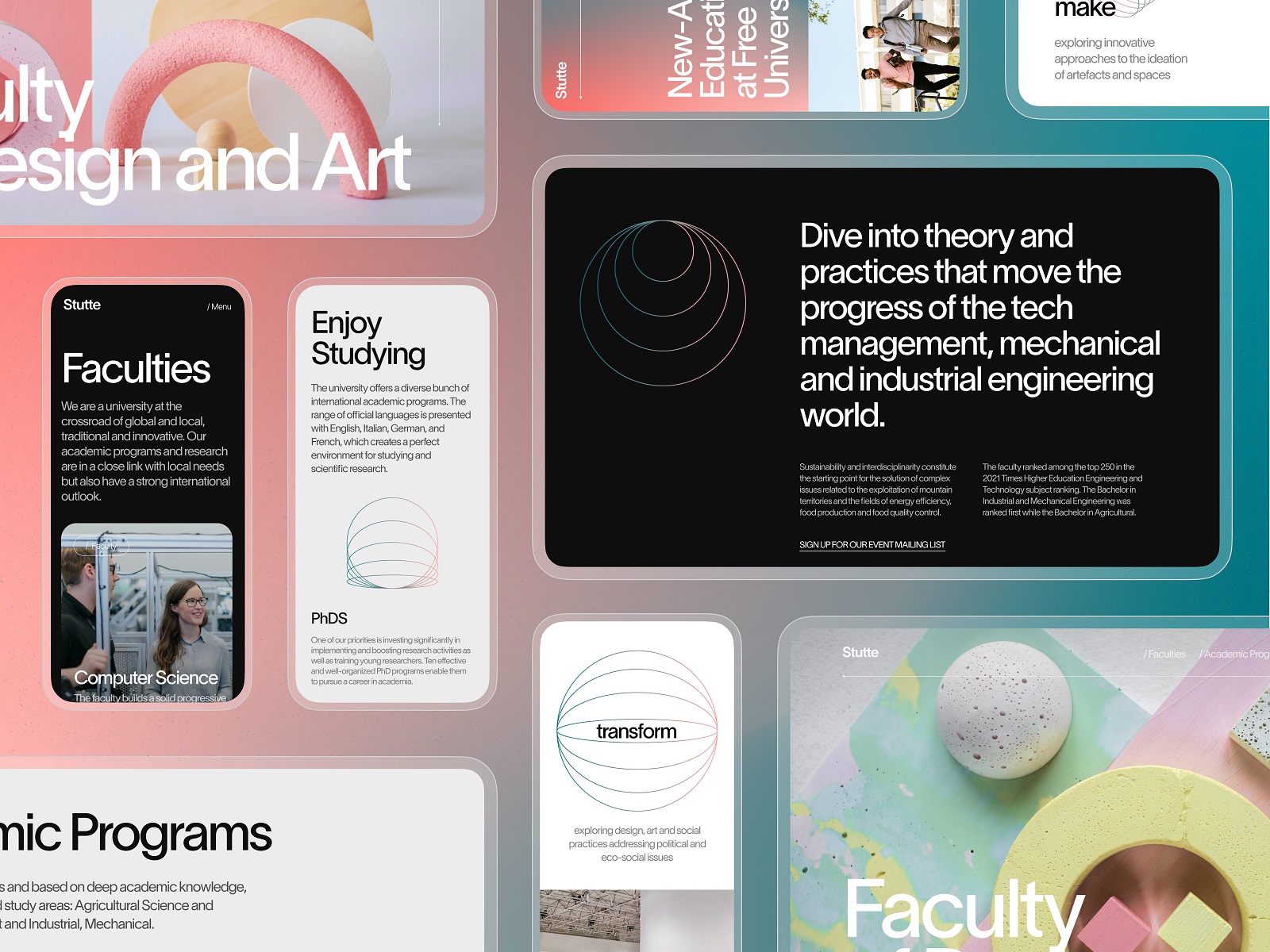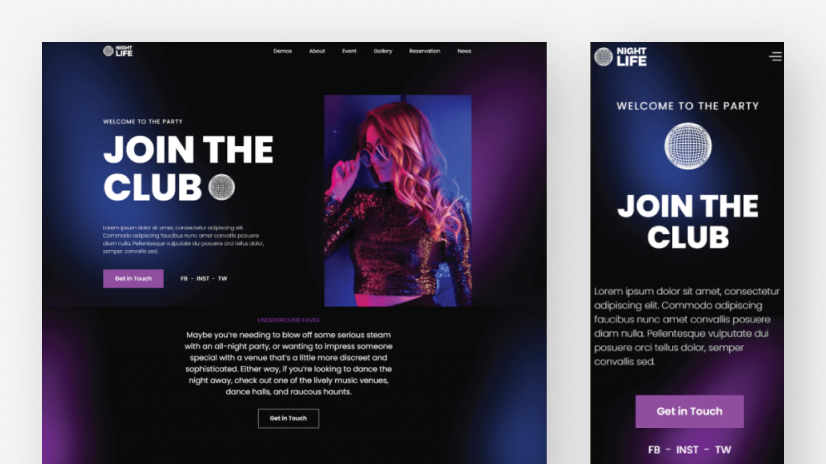
Crafting a User-Friendly Experience: Vital Components of Effective Site Design
Necessary elements such as a clear navigating structure, receptive design concepts, and quickly packing times offer as the structure for engaging users efficiently. Comprehending the underlying factors that contribute to effective style can lose light on just how to improve individual contentment and involvement.
Clear Navigation Framework
A clear navigating framework is fundamental to efficient website layout, as it directly influences customer experience and involvement. Customers ought to have the ability to situate information easily, as intuitive navigation decreases disappointment and motivates exploration. An efficient design permits site visitors to understand the connection in between various web pages and content, bring about longer website gos to and raised communication.
To achieve quality, designers should use familiar patterns, such as side or leading navigation bars, dropdown food selections, and breadcrumb trails. These aspects not just boost functionality however additionally give a sense of alignment within the website. Keeping a regular navigating framework throughout all web pages is critical; this knowledge helps individuals expect where to discover wanted details.
Additionally, incorporating search capability can even more assist customers in finding specific material rapidly. In recap, a clear navigation framework is not simply a design selection; it is a tactical component that significantly influences the general success of a website by promoting a satisfying and reliable user experience.
Responsive Style Principles
Efficient website navigation sets the stage for a smooth user experience, which becomes also much more essential in the context of responsive design concepts. Responsive design makes certain that websites adjust fluidly to numerous screen sizes and positionings, improving accessibility across gadgets. This flexibility is achieved with flexible grid designs, scalable pictures, and media questions that permit CSS to change styles based on the tool's features.
Trick principles of receptive style consist of fluid designs that make use of percents instead of dealt with units, making sure that aspects resize proportionately. In addition, employing breakpoints in CSS allows the style to change smoothly between different device dimensions, maximizing the format for each and every display kind. Making use of receptive pictures is additionally vital; pictures must immediately get used to fit the display without shedding high quality or triggering design changes.
In addition, touch-friendly user interfaces are critical for mobile customers, with sufficiently sized buttons and user-friendly gestures enhancing user interaction. By incorporating these concepts, developers can develop web sites that not only look aesthetically pleasing but also provide interesting and useful experiences throughout all gadgets. Ultimately, reliable receptive layout promotes user contentment, decreases bounce rates, and urges longer engagement with the content.
Rapid Loading Times
While individuals increasingly anticipate web sites to load promptly, quick loading times are not simply a matter of comfort; they are vital for retaining site visitors and improving total user experience. Study indicates that customers usually desert sites that take longer than 3 secs to tons. This desertion can result in raised bounce prices and get more decreased conversions, eventually damaging a brand's online reputation and income.
Rapid loading times improve customer interaction and satisfaction, as visitors are extra likely to check out a website that reacts swiftly to their communications. In addition, search engines like Google prioritize rate in their ranking algorithms, indicating that a slow internet site may struggle to achieve presence in search results page.

Intuitive Customer User Interface
Rapid loading times prepared for an engaging online experience, but they are just component of the equation. An intuitive interface (UI) is crucial to make certain site visitors can navigate a website easily. A well-designed UI allows customers to accomplish their objectives with marginal cognitive tons, fostering a smooth interaction with the site.
Trick components of an user-friendly UI include regular design, clear navigation, and well-known icons. Consistency in style elements-- such as shade plans, typography, and switch styles-- aids individuals understand just how to communicate with the internet site. Clear navigation structures, consisting of logical food selections and breadcrumb trails, enable users to locate information rapidly, minimizing disappointment and enhancing retention.
Furthermore, feedback systems, such as hover results and packing indications, inform individuals about their actions and the internet site's reaction. This openness cultivates depend on and motivates continued engagement. Focusing on mobile responsiveness ensures that users take pleasure in a natural experience throughout devices, catering to the diverse ways audiences gain access to web content.
Accessible Content Guidelines

First, utilize uncomplicated and clear language, avoiding jargon that may puzzle visitors. Emphasize correct heading frameworks, which not just help in navigation but additionally aid screen readers in interpreting material pecking orders efficiently. Additionally, provide different text for images view it now to share their significance to users that depend on assistive innovations.
Contrast is another critical component; make sure that text attracts attention against the background to enhance readability. Make certain that video and audio content includes records and subtitles, making multimedia obtainable to those with hearing disabilities.
Last but not least, integrate key-board navigability into your style, enabling individuals who can not make use of a mouse to accessibility all site functions (website design). By adhering to these easily accessible material standards, Look At This web developers can create comprehensive experiences that accommodate the requirements of all customers, eventually boosting user interaction and satisfaction
Final Thought
In conclusion, the integration of necessary components such as a clear navigating structure, responsive design principles, fast packing times, an user-friendly individual interface, and obtainable web content standards is vital for creating an user-friendly site experience. These elements collectively improve functionality and interaction, guaranteeing that individuals can effortlessly navigate and interact with the website. Focusing on these layout aspects not only enhances overall complete satisfaction but also cultivates inclusivity, suiting varied individual requirements and preferences in the digital landscape.
A clear navigating framework is essential to efficient site design, as it directly affects individual experience and interaction. In summary, a clear navigating framework is not merely a design selection; it is a calculated aspect that considerably impacts the total success of a web site by fostering a satisfying and efficient user experience.
Additionally, touch-friendly interfaces are crucial for mobile customers, with effectively sized buttons and intuitive motions enhancing customer interaction.While customers increasingly anticipate sites to load promptly, quick filling times are not just an issue of comfort; they are important for preserving site visitors and boosting general user experience. website design.In verdict, the combination of essential aspects such as a clear navigation structure, receptive design concepts, fast packing times, an intuitive individual interface, and obtainable material standards is vital for producing an user-friendly web site experience